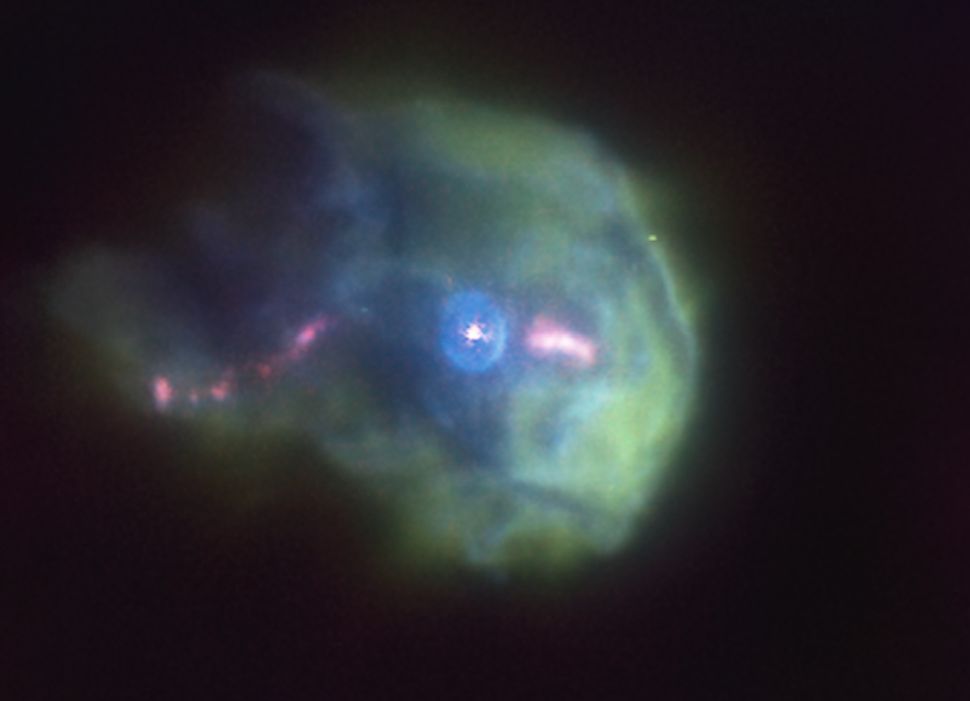In a remarkable display of celestial beauty and scientific significance, astronomers have captured an extraordinary image of a young stellar object expelling a jet of material resembling a garden sprinkler. The stunning photograph, taken using the Multi Unit Spectroscopic Explorer (MUSE) instrument on the European Southern Observatory's (ESO) Very Large Telescope (VLT), provides a closer look at the intricate details of this unique phenomenon. The star, known as 244-440, resides in the Orion Nebula, a stellar nursery located 1,350 light-years away from Earth. The image unveils an "S"-shaped jet, hinting at the presence of binary stars or the influence of nearby radiation from other stars in the region.
The Curved Jet: A Window into Binary Star Systems
The striking curvature of the jet emanating from 244-440 has captured the attention of astronomers. According to the ESO, the jet's shape suggests the possibility of a binary star system, with two stars orbiting each other. Young stars are often surrounded by disks of material that can expel powerful jets perpendicular to the disk. In this case, the periodic changes in the jet's orientation resemble the rotating motion of a water sprinkler, providing evidence of binary star activity at the heart of this enigmatic object.
The Role of Stellar Radiation in Shaping the Jet
While binary stars offer a plausible explanation for the jet's form, another intriguing possibility exists. The Orion Nebula is a highly active star-forming region, teeming with radiation from nearby stars. This radiation could potentially influence the shape of the jet, resulting in the observed "S"-shaped stream of matter. The interaction between the jet and the surrounding stellar environment creates a fascinating interplay, offering valuable insights into the complex dynamics of stellar birth.
Unveiling the Composition of the Jet
The MUSE instrument, employed in capturing the mesmerizing image, enabled astronomers to map the distribution of iron, nitrogen, and oxygen around the young star. These elements are represented in the photograph as red, green, and blue colors, respectively. MUSE's ability to simultaneously capture data at different wavelengths allowed for a detailed analysis of the gas composition and its movement. By examining these intricate patterns, scientists gain a deeper understanding of the processes involved in star formation.
The Power of Adaptive Optics and the VLT
The VLT's Unit Telescope 4, equipped with advanced adaptive optics technology, played a crucial role in achieving the remarkable clarity of the image. By compensating for the distorting effects of Earth's atmosphere, adaptive optics ensures that astronomical objects appear sharper and more defined. The resulting image surpasses the quality of even NASA's renowned Hubble Space Telescope. This breakthrough in imaging technology enabled the sharpest depiction ever captured of the 244-440 stellar object. ESO officials emphasize the immense value of this image, shedding light on the mechanisms driving star formation within massive clouds such as Orion.
Astronomical Advancements: Publication and Future Research
The recent observations of the 244-440 star and its jet have been accepted for publication in the esteemed journal Astronomy & Astrophysics, solidifying the significance of this discovery within the scientific community. The unprecedented level of detail obtained from the image paves the way for further investigations into the birth and evolution of stars. Astronomers eagerly anticipate future studies, which may unravel additional mysteries surrounding stellar jets, binary star systems, and the intricate interplay between young stars and their cosmic surroundings.




0 Comments